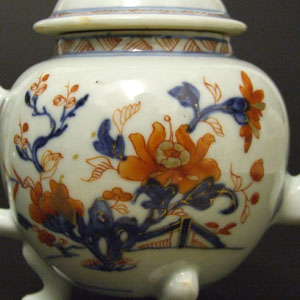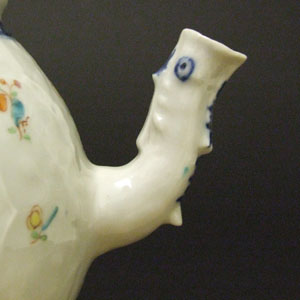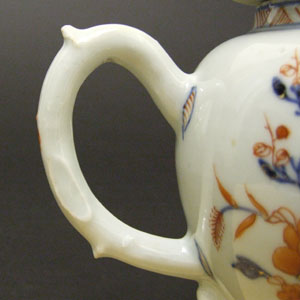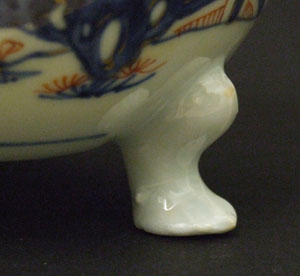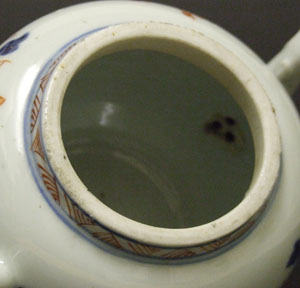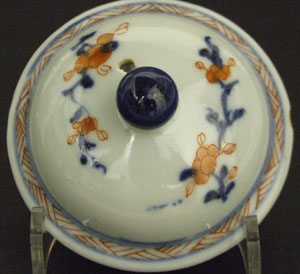
QIANLONG 1736 – 1795 Chinese Export Porcelain
An Unusual Chinese Export Porcelain Imari Teapot and Cover After a European Silver Shape, The Globular Body Supported on Three Cabriole Legs with a Crabstock Handle and Spout. Qianlong c.1765-1780. The Globular Body Supported on Three Cabriole Legs with a Shaped Handle, Spout with a Phoenix Form Opening.
SOLD
- Condition
- Very good, a small glaze chip to the cover c.5 x 2 mm.
- Size
- Length : 18.5 cm (7 1/4 inches)
- Provenance
- N/A
- Stock number
- 22608
- References
- For a very similar Chinese imari teapot teapot see : The Benjamin F. Edwards III Collection of Chinese Export Porcelain, Christie`s New York, 22nd January 2002, lot 31.
Information
The teapot, with its three feet, is not a standard silver form, but you do occasionally find them. One I find in the reference books is dated 1744 although its cover is flush rather than domed and separately profiled like yours. Another three-legged form you find in the 1720s and `30s are little egg-shaped pots that were probably for hot milk. They occur in Meissen too. My thanks to Mr Timothy Schroder for this information.
Chinese Imari Porcelain :
Imari Porcelain is the European collectors` name for a type of Japanese Porcelain made in the town of Arita, in the former Hizen Province, north western Kyūshū, and exported via the port of Imari, specifically for the European Export trade. Imari was simply the trans-shipment port for Arita wares, no porcelain was made there. The kilns at Arita formed the heart of the Japanese Porcelain industry, which developed in the early 17th century, after the white kaolin clay was discovered in 1616 by abducted Korean potter Yi Sam Pyeong (1579-1655). Although Imari originating in Japan the tern is used to describe a whole range of ceramics from all over the world, they are all linked by their palette of blue, red and gold. The Chinese Porcelain industry based at Jingdezhen made what they thought they could sell, like most potters in the 18th century they had no compunction in copying what was made elsewhere. It made perfect commercial sense, it was much safer to make something that had already been tried and tested on the market. The Chinese copied the Japanese Imari palette of underglaze cobalt blue enlivened with overglaze iron red and gilding, they also copied the Japanese patterns that used Imari colours, sometimes they shapes of vessels were copied too. Porcelain decorated with the Imari colour scheme would have looked very rich and opulent in flickering candle light on 18th century Western walnut and mahogany furniture. Indeed the colour scheme became so popular in the West during the 18th century that it was copied by most European Porcelain factories.
